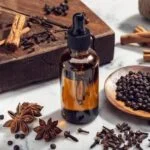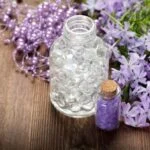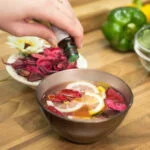Aromatherapy massage, also known as essential oil therapy, is a popular form of alternative medicine that combines the benefits of massage with the use of essential oils derived from plants. The practice involves the application of these highly concentrated plant oils, either through inhalation or skin absorption, to promote relaxation, improve mood, and relieve pain. In this section, we will delve into the concept of aromatherapy and its significant benefits in massage therapy.
Aromatherapy has been used for centuries, with its roots tracing back to ancient civilizations such as Egypt, China, and India. These cultures recognized the healing properties of aromatic plants and their ability to enhance physical and emotional well-being. Today, aromatherapy continues to be a popular holistic treatment that is often incorporated into massage therapy for its therapeutic effects.
The use of essential oils in aromatherapy massage can provide a wide array of health benefits, including stress relief, improved circulation, pain management, and enhanced relaxation. These natural oils are carefully selected for their specific properties and are applied during a massage session to amplify the overall sense of well-being. As we explore this topic further, we will discuss the history of aromatherapy and its evolution into an effective modality for promoting wellness through massage therapy.
History of Aromatherapy
Aromatherapy has been used for centuries as a holistic healing treatment, with its origins dating back to ancient civilizations. The practice of using aromatic essential oils and natural plant extracts for therapeutic purposes can be traced to early civilizations in China, Egypt, India, and Greece. These ancient cultures understood the benefits of incorporating fragrant plants into their healing rituals and medical practices.
In ancient China, aromatherapy was practiced as part of traditional Chinese medicine, where different scents were believed to have specific healing properties. The Egyptians are also renowned for their use of aromatherapy, as they utilized essential oils in the embalming process and believed in the spiritual and medicinal benefits of aromatic plants. Meanwhile, in India, the use of essential oils and aromatic herbs is deeply rooted in Ayurvedic medicine, a system that promotes balance between the body, mind, and spirit.
The Greeks were also pioneers in the use of aromatherapy, using fragrant oils for both their medicinal properties as well as for perfumery. The renowned Greek physician Hippocrates is said to have promoted the use of scented baths and massages to promote overall well-being.
As the practice evolved over time, it eventually made its way to Europe during the Middle Ages when essential oils were used to combat illnesses during the plague. This historical background illustrates how aromatherapy has been an integral part of ancient civilizations’ approach to health and wellness.
Essential Oils Used in Aromatherapy Massage
Aromatherapy massage is a holistic treatment that uses essential oils to promote physical and emotional well-being. The essential oils used in aromatherapy massage are derived from natural plant extracts and possess therapeutic properties that can enhance the massage experience. These oils have been used for centuries for their healing benefits, and each oil has unique characteristics that contribute to the overall effectiveness of aromatherapy massage.
Popular Essential Oils in Aromatherapy Massage
There are numerous essential oils used in aromatherapy massage, each with its unique scent and therapeutic properties. Some of the most popular essential oils used include lavender, known for its calming and relaxing effects, peppermint, which is invigorating and helps alleviate headaches, eucalyptus, commonly used for respiratory support, and tea tree oil, valued for its antibacterial and antifungal properties.
Therapeutic Properties of Essential Oils
Essential oils used in aromatherapy massage are chosen based on their specific therapeutic properties. For example, lavender oil is often selected for its soothing effects on the nervous system, making it beneficial for reducing stress and anxiety. Eucalyptus oil is favored for its decongestant properties and its ability to clear the sinuses.
Peppermint oil is known for its cooling sensation and can help relieve muscle pain when used in massage. Understanding the individual properties of each essential oil is crucial in creating a customized aromatherapy massage experience tailored to the client’s needs.
Blending Essential Oils
In some cases, aromatherapists may blend different essential oils together to create a synergistic effect that enhances the overall therapeutic benefits of the massage. These blends can be customized according to the client’s specific needs or preferences.
For instance, a blend of citrus oils such as lemon or orange may be used to uplift mood and energy levels, while a combination of chamomile and ylang-ylang can promote relaxation and sleep. The art of blending essential oils requires knowledge of their individual properties as well as an understanding of how they interact with one another to achieve desired outcomes in aromatherapy massage sessions.
The Aromatherapy Massage Process
Aromatherapy massage is a holistic approach to health and wellness that combines the therapeutic benefits of massage with the natural healing properties of essential oils. The process begins with a consultation between the client and the therapist to discuss any specific health concerns, personal preferences, and desired outcomes. This allows the therapist to customize the aromatherapy massage experience to meet the individual needs of each client.
Once the consultation is complete, the client will be asked to choose their preferred essential oil or blend for the massage. Essential oils are carefully selected based on their specific therapeutic properties and the client’s preferences. Common essential oils used in aromatherapy massage include lavender for relaxation, peppermint for energizing, and eucalyptus for respiratory support. The chosen oil is then diluted in a carrier oil before being applied to the skin.
During the massage session, the therapist will use various techniques to apply gentle pressure and rhythmic movements to different areas of the body. These techniques may include effleurage (long, sweeping strokes), petrissage (kneading and squeezing muscles), and lymphatic drainage (gentle, rhythmic movements that stimulate lymph flow). The combination of these massage techniques with the inhalation of aromatic essential oils helps promote relaxation, relieve muscle tension, improve blood circulation, and enhance overall well-being.
Overall, an aromatherapy massage session typically lasts between 60 to 90 minutes. Clients can expect to experience deep relaxation as they unwind in a peaceful environment while enjoying the soothing scents of essential oils. After the session, clients may continue to experience the benefits of aromatherapy as they go about their day feeling rejuvenated and balanced.
| Essential Oil | Therapeutic Properties |
|---|---|
| Lavender | Relaxation |
| Peppermint | Energizing |
| Eucalyptus | Respiratory Support |
Health Benefits of Aromatherapy Massage
Aromatherapy massage offers a multitude of health benefits for both physical and emotional well-being. The use of essential oils during a massage session enhances the overall experience and contributes to the effectiveness of the treatment. One of the primary benefits of aromatherapy massage is stress relief. The gentle manipulation of muscles combined with the inhalation of calming essential oils promotes relaxation, reduces anxiety, and improves mental clarity.
In addition to stress relief, aromatherapy massage also aids in improved circulation. The manual manipulation of soft tissues during the massage process helps to increase blood flow throughout the body. When combined with specific essential oils such as peppermint or eucalyptus, which have vasodilating properties, the massage can further enhance circulatory benefits.
Furthermore, aromatherapy massage can effectively assist in pain management. Certain essential oils like lavender and chamomile have analgesic properties that can help alleviate muscle pain and headaches. When incorporated into a massage, these oils work synergistically to provide relief from both acute and chronic pain conditions.
Finally, by stimulating the olfactory senses through the use of aromatic essential oils, aromatherapy massage can induce positive emotional responses such as relaxation, joy, and calmness. This aspect adds an extra dimension to traditional massage therapy by addressing not only physical discomfort but also emotional well-being.
| Benefit | Associated Essential Oils |
|---|---|
| Stress Relief | Lavender, Chamomile, Bergamot |
| Improved Circulation | Peppermint, Eucalyptus |
| Pain Management | Lavender, Chamomile |
Choosing the Right Aromatherapy Massage Oil
When it comes to choosing the right aromatherapy massage oil, there are several factors to consider in order to customize the experience and achieve the desired therapeutic effects. Each essential oil used in aromatherapy massage has its own unique properties and benefits, so it is important to select the most suitable oil based on individual needs and preferences.
Types of Essential Oils
There is a wide variety of essential oils available for use in aromatherapy massage, each with its own distinct aroma and therapeutic properties. Some of the most commonly used essential oils include lavender for relaxation, peppermint for muscle tension relief, eucalyptus for respiratory support, and bergamot for mood enhancement. It is important to consider the specific health concerns or goals when choosing the right oil for an aromatherapy massage session.
Personal Preferences
In addition to the therapeutic benefits, personal fragrance preferences play a significant role in selecting the right aromatherapy massage oil. Some individuals may prefer floral scents such as rose or geranium, while others may enjoy citrusy or woody fragrances like lemon or cedarwood. The chosen scent should be appealing and calming to ensure a truly enjoyable aromatherapy massage experience.
Skin Sensitivities and Allergies
Another crucial factor to consider when selecting an aromatherapy massage oil is any potential skin sensitivities or allergies. It is important to perform a patch test before using any new essential oil to ensure that it does not cause any adverse reactions.
Individuals with sensitive skin should opt for milder oils such as chamomile or jasmine, while those with allergies should avoid oils that may trigger allergic responses. By carefully considering these factors, individuals can choose the right aromatherapy massage oil that aligns with their specific needs and preferences for a truly personalized and effective experience.
Aromatherapy Massage Techniques
Aromatherapy massage involves the use of essential oils and therapeutic massage techniques to promote relaxation, relieve stress, and enhance overall well-being. In this section, we will delve into the different massage techniques used in aromatherapy massage, including effleurage, petrissage, and lymphatic drainage.
- Effleurage: This technique involves long, sweeping strokes that glide over the body using the palms of the hands. The gentle and rhythmic movements of effleurage help to warm up the muscles and prepare the body for deeper massage techniques. It also promotes relaxation and improves circulation, making it an ideal choice for the initial stage of an aromatherapy massage session.
- Petrissage: Petrissage consists of kneading, squeezing, and lifting soft tissues to release muscle tension and improve blood flow. This technique targets deeper layers of muscle tissue and can help alleviate pain and stiffness. By gently manipulating the muscles with a firm but controlled pressure, petrissage promotes a sense of deep relaxation while also addressing physical discomfort.
- Lymphatic Drainage: Lymphatic drainage is a gentle massage technique that focuses on stimulating the lymphatic system to eliminate toxins and reduce swelling. Using light pressure and rhythmic movements, this technique encourages the natural flow of lymph fluid throughout the body, supporting immune function and promoting detoxification. Aromatherapy massage incorporating lymphatic drainage can be particularly beneficial for individuals dealing with edema or inflammation.
Incorporating these various massage techniques into an aromatherapy session can enhance the overall therapeutic effects of the treatment. The combination of soothing essential oils with skilled hands-on manipulation creates a holistic experience that addresses both physical and emotional well-being. Whether you are seeking relief from muscle tension or simply wish to unwind and de-stress, aromatherapy massage techniques offer a versatile approach to health and wellness.
Precautions and Considerations
In conclusion, aromatherapy massage offers a holistic approach to well-being, combining the therapeutic benefits of essential oils with the relaxing effects of massage therapy. The use of essential oils in massage has been traced back to ancient civilizations, where they were valued for their medicinal properties and healing abilities. Today, aromatherapy massage continues to be a popular form of alternative therapy, known for its ability to promote relaxation, reduce stress, and alleviate various physical and emotional ailments.
When considering an aromatherapy massage, it is important to take certain precautions and considerations into account. Some individuals may have sensitivities or allergies to specific essential oils, so it is crucial to communicate any existing health conditions or concerns with the massage therapist beforehand. Additionally, choosing the right aromatherapy massage oil is key to ensuring a safe and effective experience, as different oils have varying properties and effects on the body and mind.
Overall, aromatherapy massage has been shown to have numerous health benefits, including improved circulation, pain management, and emotional well-being. By understanding the history of aromatherapy, the various essential oils used in this practice, and the proper techniques for a safe and effective experience, individuals can enjoy the many advantages of aromatherapy massage while minimizing potential risks.
With its rich history and proven therapeutic effects, aromatherapy massage has become a valuable tool for promoting overall wellness and balance in today’s fast-paced world.
Frequently Asked Questions
How Do You Describe Aromatherapy?
Aromatherapy is a holistic healing treatment that uses natural plant extracts to promote health and well-being. These essential oils are often used in combination with massage or other therapeutic techniques.
What Happens in a Full Body Aromatherapy Massage?
In a full body aromatherapy massage, the therapist will use a blend of essential oils to enhance the massage experience. The client will inhale the aroma of these oils, while also absorbing them through the skin during the massage.
What Is the Key Component of an Aromatherapy Massage?
The key component of an aromatherapy massage is, of course, the essential oils themselves. These concentrated plant extracts are chosen for their specific therapeutic properties and are carefully blended to create a customized experience for each client. The essential oils are typically diluted in a carrier oil before being applied to the skin during the massage.

Are you looking for a natural way to improve your health and wellbeing?
If so, aromatherapy may be the answer for you.






